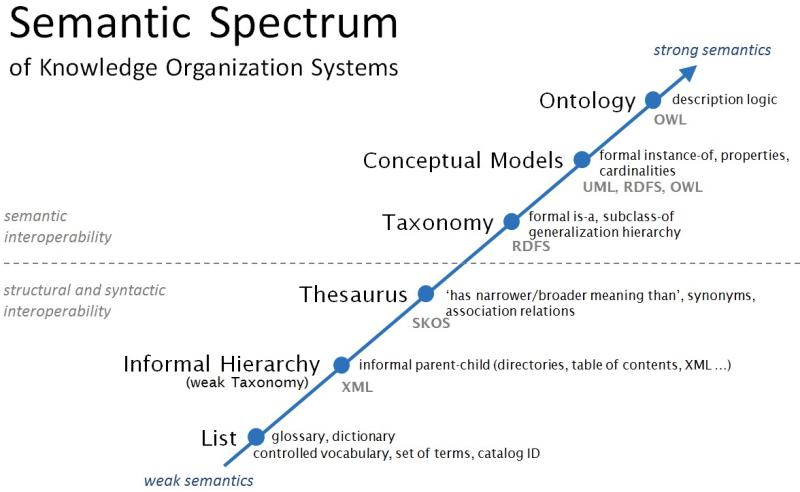Figure 3. Semantic Spectrum of Knowledge Organization System shows, from left to right, structures that range from simple lists to full ontologies, distinguishing between weak semantic and strong semantic structures. The original ontology spectrum was intended to clarify the various constructions that people were referring to as “ontologies.” The spectrum later was expanded to note semantic strength and interoperability, among other aspects. Illustration courtesy of OSTHUS. Sources: McGuinness, D.L. “Ontologies Come of Age." In Fensel, D., Hendler, J., Lieberman, H., and Wahlster, W., Eds. Spinning the Semantic Web: Bringing the World Wide Web to Its Full Potential. MIT Press, 2003; Uschold, M., and Gruninger, M. “Ontologies and semantics for seamless connectivity.” SIGMOD Rec. 33(4) (December 2004), p. 58–64; Obrst, L. “The Ontology Spectrum.” In Poli, R., Healy, M., and Kameas, A. “Theory and Applications of Ontology: Computer Applications.” Springer Netherlands, 17 Sep 2010; Obrst, L., and Davis, M. “Semantic Wave 2008 Report: Industry Roadmap to Web 3.0 & Multibillion-Dollar Market Opportunities,” 2008.

